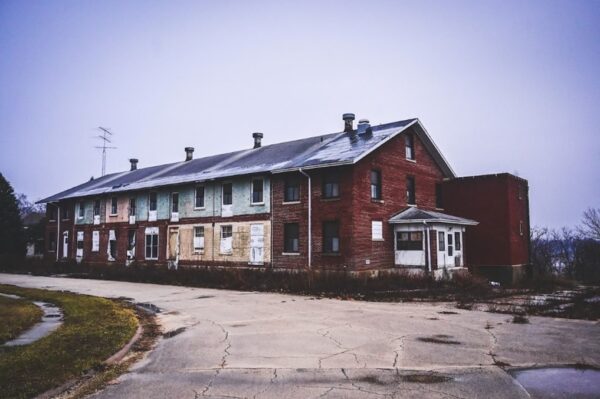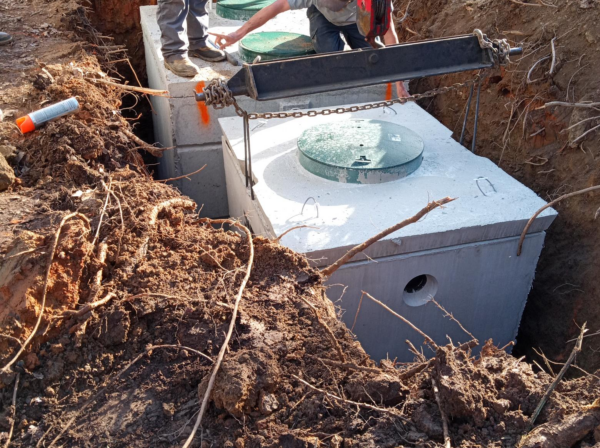Red Cliff Wastewater Treatment Plant Compliant Treatment Process

Red Cliff Public Works Department, which includes the Red Cliff Band of Lake Superior Ojibwe’s wastewater treatment plant, is located on the southern shores of Lake Superior. The Wastewater Treatment Department is run by the Public Works Administrator, along with two operators. They are also hiring a new Assistant Director.
Aided by the many years of knowledge between the experienced Public Works Administrator and Lead Operator, the utility has been making great strides to get the Wastewater Treatment Department in compliance with US Environmental Protection Agency (EPA) regulations and keep it there.
When the administrator came on board, the first task he undertook was to lead the utility to completion of the EPA’s Administrative Order of Compliance. The administrative order required a set of tasks and responsibilities to be conducted within two years. This was accomplished in nine months.
One of the many positive changes made on the way to compliance was moving the chemical feed of aluminum sulfate to the splitter box prior to effluent entering the clarifiers. By injecting the aluminum at the splitter box, the additive now has enough “contact time” to assist the wastewater with phosphorus and ammonia removal via the process of flocculation. As the particles combine, they become floc and settle out. The better the flocculation, the better the overall effluent, with less phosphorus and ammonia.
Let’s review the wastewater treatment process at Red Cliff:
- First, we have our influent, which is pumped to the treatment plant from lift stations and gravity-fed sewer lines throughout the collection system. As the wastewater begins its process, it starts off at pretreatment, where it passes through a bar screen which is used to remove large physical materials and debris.
- From the bar screen, the wastewater continues through a fine screen where smaller debris is removed.
- From there, the wastewater passes through a grit removal process that helps remove the finer granular matter from the wastewater.
- As the wastewater makes its way through the grit removal process, it now enters the oxidation ditch. This is where the raw wastewater is introduced to microorganisms and the microbiology portion of treatment begins. It is the wastewater operator’s job to keep the microorganisms happy and healthy. The dissolved oxygen (DO) must be monitored and set at the correct level to keep the tiny critters alive, but not give them too much DO where they won’t eat any of the biological matter in the wastewater to keep the treatment process going. There is a fine line that needs to take place with the microorganisms as they play a major role within the wastewater treatment process. The biology and microbiology that take place within wastewater treatment is just one of the many processes that most people do not know happens.
- From the oxidation ditch, a portion of the mixed liquor is pumped back to the oxidation ditch, also known as Return Activated Sludge or RAS. RAS has a healthy batch of microorganisms which will be used to jump-start the natural microbiologic treatment process.
- Now, as wastewater has been introduced to the microbes and natural matter has been removed, aluminum sulfate has been added to aid in phosphorus and ammonia removal and the effluent makes its way to the clarifiers.
- As the alum interacts creating floc, this matter will settle to the bottom which creates a clearer effluent.
- From the previous treatment process, the final product, known as effluent, is sent through an ultraviolet light bank which neutralizes any pathogenic organisms. This process prevents any remaining pathogens from being able to reproduce if they have made it through the treatment process.
Numerous steps are taken to ensure the effluent is safe and meets all the EPA’s stringent standards before final discharge. Many samples, analytical data, and test results are collected, reviewed, and recorded before the final effluent is discharged. Biosolids created during the treatment process are pumped to the utility’s reed beds, where they are dewatered and stored. The reed beds can dewater natural materials many times the weight and size of the reeds themselves. Through a collection of underdrains, any liquid collected is sent back to the top of the plant to be reintroduced and begin the process all over again.
Through the hard work of the utility’s staff and the partnership with RCAP, the Red Cliff Wastewater Treatment Plant has met and continues to meet the requirements and standards needed to stay in compliance.


This article was funded under the EPA NPA 2 22 – 24 Grant.



